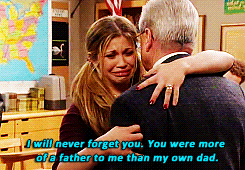Oh my gosh, it took me way longer than I planned to get this post up. I take a lot of pride in my classroom and have wanted a chance to show it off. : ) Apologies for the image heavy post, but how can you do a classroom tour without a ton of pictures?
First a brief bit of background: When designing our classroom, we had our students and our goals in mind. We knew many of our students would never pass the state exam, due to their various learning disorders and disabilities, so our goal was not to drill them repeatedly to force them to do well. Instead we felt the best thing we could do was teach our students to actually enjoy reading.
Many of them have been forced to read and dragged through literacy programs since elementary school. Now in high school they've spent years hating reading and many can't think of a single time they enjoyed reading something. They've just resigned themselves to being forced to do it (or fake it) for a few more years until they graduate, after which they plan to avoid reading as much as possible.
With that in mind, we designed Starbooks, a warm, inviting classroom where you'd actually want to cuddle up with a good book. Rather than a coffee café, it's a book café where students get free choice on what they want to read, and time to actually read for fun.
We do plenty of targeted instruction and work as well, but building a love of reading is at the heart of it.
Without further ado... Welcome to Starbooks.
Here's the front half of our classroom. We went for an eclectic collection of tables and chairs, all gathered from our district warehouse and transported by ourselves (and some very kind family members).
The colorful padded chairs had been run down, mildewy, grey things, but my co-teacher Janice reupholstered them, replacing the padding and matching the fabric to our room's color scheme.
You can see a full panorama of the classroom here to get a sense of the size and layout:
Our student resource center, including the Turn-It-In bins, writing utensils, and any other supplies the kids may need.

We went with the CAFE acronym, created by "the Sisters" in
The CAFE Book: Engaging All Students in Daily Literary Assessment and Instruction. We hadn't even heard of CAFE before deciding on our café theme, so it's was a fun coincidence.

Our Lingo List (previously the word door neé word wall). The yellow labels are for our ELL student who recently moved here from Puerto Rico.

Across from our Lingo List, we have our Dead Word Graveyard. These words have been banned from answers to encourage our students to expand their vocabulary and not be lazy in their writing.
This is our multipurpose area for mini conferences, and for students to sit outside of the group for a while if they need some space.
Books! What good is a Reading classroom without books? Our goal this year was to have 2000 books in our class library. This is our series shelf, one of five bookshelves in the room.
Comfy Reading corner. Students are ONLY allowed to sit here when reading their books.
This year we tried sorting our books on the shelves using photo boxes. It's great for separating by genre and they can be moved to different areas of the room easily.
Part of enjoying reading is sharing book recommendations with others. Students love recommending a book so they can be put in the display case. We put the book they recommend, and a framed photo of the student who made the recommendation. We threw in some party decorations and fairy lights to jazz it up.
Our current learning board. We usually have the anchor chart for our current topic, plus the matching required Marzano scale up.
We also keep up with announcements and events on our board since our kids sometimes get tripped up by the rotating schedule, and may miss announcements. You can see how long ago I actually took these pictures!
It's all about Reading!
This is our Computer On Wheels, aka the COW. I don't know why we're the only teachers in the school to think to put actual cows on our COW, but it makes it easy to find whenever we need to get it back from IT.
Ah, non-negotiables. In addition to class rules, we have specific items that are absolutely not negotiable in any way, shape, or form. We teach our kids to advocate for themselves and speak up if they think something is illogical or unfair, but they know these are off limits.
We also use this to teach the words/parts non-, negotiate, and -able.
One of my favorite quotes. I made this poster years ago when my classroom theme was The Magic of Reading.
I somehow managed to not get a good picture of my desk, but this is the shelf behind it. We try to change it each season. This was for the start of the read to represent me.
My small group area. When we got a budget to redo this classroom in exchange for giving up our previous classrooms and team teaching, we were both super excited to be able to get these tables for small group work. They seem pretty common in elementary, but not in high school.
It's Skippyjon Jones! This is Janice's favorite book series, and she reads to our students every year. You may not expect high school students (some with criminal records) to enjoy a picture book, but they will gather 'round, sit on the floor, and get into it.
More yellow labels for our ELL student. Love him!
And finally, what you don't see when bloggers post pictures of their classrooms - all the mess they had to hide. I told you we have around 2,000 books, and we did NOT have them all sorted by the start of the year. We ended up shoving them in one of the kitchens (our room was previously a culinary room) and worked on sorting them from there: p
I hope you enjoyed a look at our classroom. I wish I could give a better sense of the room but I did my best! If you can think of anything else you'd like to see, or have any questions, PLEASE comment below!!!
Thanks for sticking through this whole post! : )






































